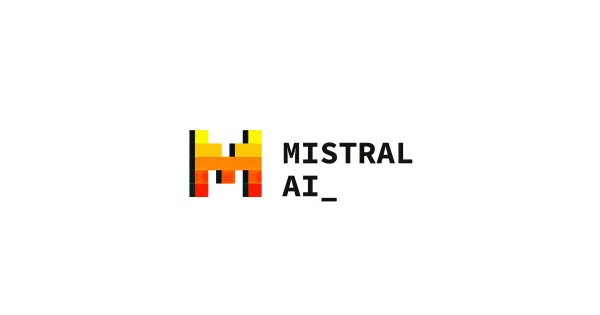3 AI Tactics to Future-Proof Your Website

As technology advances and consumer expectations grow, businesses must stay ahead by ensuring their websites remain relevant and adaptable. Future-proofing your site is essential for long-term success, allowing it to evolve with industry trends and technological changes.
Artificial Intelligence (AI) plays a key role in this process, offering tools to make websites more efficient, user-friendly, and adaptable. Let's look into the 3 AI tactics that enhance user experience, improve content quality, and provide deeper insights into user behavior, ensuring your website remains a valuable asset for the future.
Tactic 1) AI-Powered Personalization

What is Personalization, and Why Does it Matter?
Personalization refers to the practice of tailoring the content, design, and overall user experience of a website to the individual preferences and behaviors of its users. Consumers expect personalized experiences across all their interactions, and websites are no exception. Studies have shown that personalization can significantly increase user engagement, boost conversion rates, and foster long-term customer loyalty.
However, traditional methods of personalization, such as manual segmentation and rule-based targeting, are becoming increasingly inadequate. These methods often fail to capture the complexities of individual user behavior and preferences. This is where AI-powered personalization comes into play.
How AI Enhances Website Personalization
AI-powered personalization utilizes machine learning algorithms and data analysis to deliver highly customized experiences to users. Unlike traditional personalization techniques, AI can analyze vast amounts of data in real time, identifying patterns and trends that would be impossible for humans to detect.
For example, AI can analyze a user's browsing history, purchase behavior, and even social media activity to create a complete profile of their preferences. This data is then used to deliver personalized content, product recommendations, and even website layouts that are specifically tailored to each user.
One of the key advantages of AI-powered personalization is its ability to adapt and evolve over time. As users interact with your website, the AI system continuously learns and updates its understanding of their preferences, ensuring that the personalization remains relevant and effective.
Benefits of AI-Powered Personalization for User Experience
The benefits of AI-powered personalization are manifold:
- Enhanced User Engagement: Personalized content is more likely to resonate with users, leading to increased time spent on the website and higher engagement rates.
- Improved Conversion Rates: By delivering relevant content and product recommendations, AI-powered personalization can significantly boost conversion rates, turning visitors into customers.
- Increased Customer Loyalty: Personalized experiences create a sense of connection and satisfaction, creating long-term customer loyalty.
- Higher ROI: With AI optimizing the user experience, businesses can expect a higher return on investment from their website.
Case Studies/Examples of Successful AI Personalization Implementations
Several companies have successfully implemented AI-powered personalization to enhance their websites:
- Amazon: Amazon's recommendation engine is one of the most well-known examples of AI-powered personalization. By analyzing users' purchase history, browsing behavior, and other data points, Amazon delivers personalized product recommendations that account for a significant portion of its sales.
- Netflix: Netflix uses AI to personalize content recommendations based on users' viewing history and preferences. This personalization has been a key factor in Netflix's ability to retain subscribers and increase viewing times.
- Spotify: Spotify's Discover Weekly playlist is a prime example of AI-driven personalization. By analyzing users' listening habits, Spotify curates a weekly playlist that is uniquely tailored to each user.
How to Implement AI-Powered Personalization on Your Website
Implementing AI-powered personalization on your website involves several steps:
- Data Collection: The first step is to collect and centralize user data from various sources, such as website analytics, CRM systems, and social media platforms.
- Choosing the Right AI Tools: There are numerous AI tools available for personalization, such as Dynamic Yield, Optimizely, and Adobe Target. Choose a tool that fits your business needs and integrates seamlessly with your existing systems.
- Setting Up Machine Learning Models: Once the data is collected, the next step is to set up machine learning models that can analyze this data and make predictions about user behavior.
- Continuous Optimization: AI-powered personalization is an ongoing process. Continuously monitor the performance of your personalization efforts and make adjustments as needed to ensure optimal results.
Tactic 2) AI-Driven Content Creation and Optimization

The Role of Content in Website Success
Content is often referred to as the lifeblood of a website. It drives traffic, engages visitors, communicates value, and ultimately converts leads into customers. High-quality content that resonates with your audience is essential for building trust, authority, and long-term relationships. However, creating and maintaining such content consistently can be a daunting task, especially as the demand for fresh, relevant, and optimized content continues to grow.
The challenge of producing effective content lies not only in creativity but also in the need to meet ever-evolving SEO standards, audience expectations, and competitive benchmarks. This is where AI-driven content creation and optimization come into play, offering a powerful solution to streamline and enhance your content strategy.
AI Tools for Content Creation and Optimization
AI technology has made significant strides in recent years, with a variety of tools now available to assist in content creation and optimization. These tools leverage natural language processing (NLP), machine learning, and data analysis to help businesses produce high-quality content at scale. Some of the most notable AI-driven content tools include:
- GPT-based Writing Assistants: Tools like Jasper and Copy.ai can generate content based on specific inputs, helping writers overcome writer's block, generate ideas, and produce initial drafts. These tools can also optimize content for tone, style, and readability.
- SEO Optimization Tools: AI-powered SEO tools like Surfer SEO and Clearscope analyze existing content against top-ranking pages, suggesting keyword placements, content structure, and optimization strategies to improve search engine rankings.
- Content Curation Tools: Tools like SEMRush and Ahrefs use AI to curate relevant content from across the web, helping businesses maintain an active content calendar without constantly creating new material from scratch.
- Image and Video Content Creation: AI-driven platforms like Dall-E and Midjourney allow businesses to create engaging visual content, including videos and images, with minimal effort, ensuring that all forms of content on a website are dynamic and visually appealing.
Advantages of Using AI for Content Creation and Optimization
Implementing AI in your content strategy offers several key advantages:
- Increased Efficiency: AI tools can automate time-consuming tasks such as research, drafting, and editing, allowing content teams to focus on more strategic aspects of content creation.
- Consistency in Quality: AI ensures that content is consistent in tone, style, and quality, reducing the likelihood of errors and maintaining a professional standard across all pieces of content.
- Enhanced SEO Performance: AI-driven optimization tools can analyze vast amounts of data to identify the most effective keywords, content structure, and SEO strategies, helping your content rank higher in search engine results.
- Personalized Content: AI can analyze user data to create personalized content that resonates with different segments of your audience, increasing engagement and relevance.
- Scalability: With AI, you can scale your content efforts without a proportional increase in resources. Whether you need to create more content or optimize existing content, AI tools can help you meet the demands of your audience efficiently.
Case Studies/Examples of AI-Driven Content Strategies
Many companies have successfully integrated AI into their content strategies, leading to impressive results:
- The Washington Post: The Washington Post uses an AI tool named "Heliograf" to generate news articles. Heliograf has been instrumental in covering local elections, sports events, and financial reports, allowing the publication to produce content at scale while freeing up human reporters for more complex stories.
- HubSpot: HubSpot utilizes AI tools like MarketMuse to optimize their blog content. By analyzing top-ranking pages and identifying content gaps, HubSpot has significantly improved the SEO performance of their blog, driving more organic traffic and increasing lead generation.
- Grammarly: Grammarly is a widely used AI-powered writing assistant that helps users improve the clarity, tone, and correctness of their content. It's an excellent example of how AI can assist in real-time content optimization, ensuring that written communication is professional and effective.
Steps to Integrate AI in Content Creation and Optimization
To successfully integrate AI into your content strategy, follow these steps:
- Identify Your Content Needs: Determine the areas where AI can add the most value, whether it's in content creation, SEO optimization, or personalized content delivery.
- Select the Right AI Tools: Choose AI tools that align with your content goals and existing workflows. Consider the features, integration capabilities, and user-friendliness of each tool.
- Train Your AI Tools: Many AI tools require some level of training or customization to align with your brand voice and content standards. Invest time in setting up the tools properly to maximize their effectiveness.
- Monitor and Adjust: AI is not a set-it-and-forget-it solution. Continuously monitor the performance of AI-generated content and optimization strategies, making adjustments as needed to ensure that they meet your expectations.
- Blend AI with Human Creativity: While AI can handle many aspects of content creation, human creativity and judgment are still crucial. Use AI to enhance your content efforts, but don't rely on it entirely—ensure that your content remains authentic and aligned with your brand values.
Tactic 3) AI-Based Analytics and Predictive Insights

Importance of Analytics in Understanding User Behavior
Understanding user behavior is crucial for optimizing website performance and achieving business goals. Analytics provide insights into how users interact with your website, what content they engage with, and where potential drop-offs occur. This information is invaluable for making informed decisions about content, design, and overall user experience. However, traditional analytics tools often fall short in providing actionable insights, especially when dealing with large volumes of data or complex user behavior patterns.
This is where AI-based analytics and predictive insights come into play. By leveraging the power of AI, businesses can not only analyze user data more effectively but also predict future behavior, allowing for more proactive and strategic decision-making.
How AI Improves Data Analysis and Prediction
AI-based analytics go beyond the capabilities of traditional data analysis tools by using machine learning algorithms to identify patterns, correlations, and trends in user behavior that might not be immediately apparent. These tools can process vast amounts of data in real time, providing deeper and more accurate insights.
Here’s how AI enhances data analysis and prediction:
- Automated Data Processing: AI can automatically process and analyze large datasets, saving time and reducing the potential for human error. This automation allows businesses to focus on interpreting the results rather than getting bogged down in data crunching.
- Pattern Recognition: AI excels at recognizing patterns within data that might be missed by traditional methods. For example, AI can identify subtle shifts in user behavior that signal emerging trends, allowing businesses to adjust their strategies accordingly.
- Predictive Analytics: AI doesn’t just analyze past and current data—it can also predict future trends. By analyzing historical data and user behavior, AI can forecast outcomes such as user churn, purchasing behavior, and content engagement, enabling businesses to take proactive measures.
- Personalized Insights: AI can segment users into highly specific groups based on their behavior, preferences, and interactions. This segmentation allows businesses to deliver personalized experiences and content, further enhancing user engagement and satisfaction.
Applications of AI-Based Predictive Insights in Web Strategy
AI-based predictive insights can be applied to various aspects of your website strategy, offering tangible benefits:
- User Experience Optimization: By predicting how users will interact with different elements of your website, AI can help you optimize layouts, navigation, and content placement to improve user experience and increase conversions.
- Content Strategy: Predictive analytics can forecast which types of content will resonate most with your audience, allowing you to focus your efforts on creating content that drives engagement and meets user needs.
- SEO and Marketing Campaigns: AI can predict which keywords, topics, and campaigns will perform best based on current trends and historical data, enabling you to fine-tune your SEO and marketing strategies for maximum impact.
- Sales and Lead Generation: AI can analyze user behavior to predict purchasing patterns, helping businesses identify high-potential leads and optimize sales funnels for better conversion rates.
- Customer Retention: By analyzing user data, AI can predict which users are at risk of churn and recommend targeted interventions to retain them, such as personalized offers or re-engagement campaigns.
Examples of AI Analytics Tools and Their Impact
Several AI-powered analytics tools are transforming how businesses understand and interact with their website data:
- Google Analytics with AI Features: Google Analytics has integrated AI features like predictive metrics that can forecast revenue, user engagement, and more. These insights help businesses make data-driven decisions and optimize their websites effectively.
- Mixpanel: Mixpanel uses machine learning to provide predictive insights on user behavior, allowing businesses to identify trends, optimize product features, and improve user retention strategies.
- Hotjar: Hotjar combines heatmaps, session recordings, and AI-driven analysis to provide deep insights into how users interact with your website. This tool helps businesses identify pain points and optimize the user journey for better outcomes.
- Kissmetrics: Kissmetrics leverages AI to track user behavior across different devices and platforms, offering predictive insights that help businesses refine their marketing strategies and improve customer engagement.
Implementation Guide for AI-Based Analytics on Your Website
Implementing AI-based analytics on your website requires careful planning and execution. Here’s a step-by-step guide to help you get started:
- Assess Your Data Needs: Determine the specific insights you need to achieve your business goals. This could include understanding user behavior, predicting trends, or optimizing content and marketing strategies.
- Choose the Right AI Tools: Select AI analytics tools that align with your data needs and integrate seamlessly with your existing systems. Consider factors such as ease of use, customization options, and the ability to scale as your business grows.
- Integrate AI with Existing Analytics: If you’re already using analytics tools like Google Analytics, look for AI tools that can complement and enhance these platforms. Many AI tools offer integrations that allow for a seamless flow of data and insights.
- Set Up Data Collection and Analysis: Ensure that your website is set up to collect the necessary data. This might involve implementing tracking codes, setting up event tracking, and configuring data sources. Once the data is being collected, use AI tools to analyze and interpret it.
- Create Actionable Insights: Use the insights generated by AI to make data-driven decisions. Whether it’s optimizing content, adjusting your website design, or refining your marketing strategies, ensure that the insights are actionable and aligned with your business objectives.
- Monitor and Adjust: Continuously monitor the performance of your AI-based analytics. AI tools are most effective when they’re continuously learning and adapting, so it’s important to regularly review and adjust your strategies based on the latest insights.
Final Thoughts
Future-proofing your website is essential to staying competitive. Embracing AI-driven tactics ensures your site remains relevant, engaging, and adaptable to future changes.
The 3 AI tactics—personalization, content creation and optimization, and predictive analytics—are key to maintaining an edge. Personalization enhances user experience, content optimization boosts SEO, and predictive analytics offer actionable insights.
As AI advances, its role in web development grows. Implementing these strategies now ensures long-term success. We build AI-powered websites—reach out for a consultation.
Key Takeaways
| Tactic | Key Takeaways |
|---|---|
| 1. AI-Powered Personalization | AI customizes user experiences, leading to better engagement, higher conversions, and increased loyalty. |
| 2. AI-Driven Content Creation | AI accelerates content creation, ensures consistency, improves SEO, and scales content production efficiently. |
| 3. AI-Based Analytics & Predictive Insights | AI analyzes and predicts user behavior, helping optimize site performance and support data-driven decisions. |





